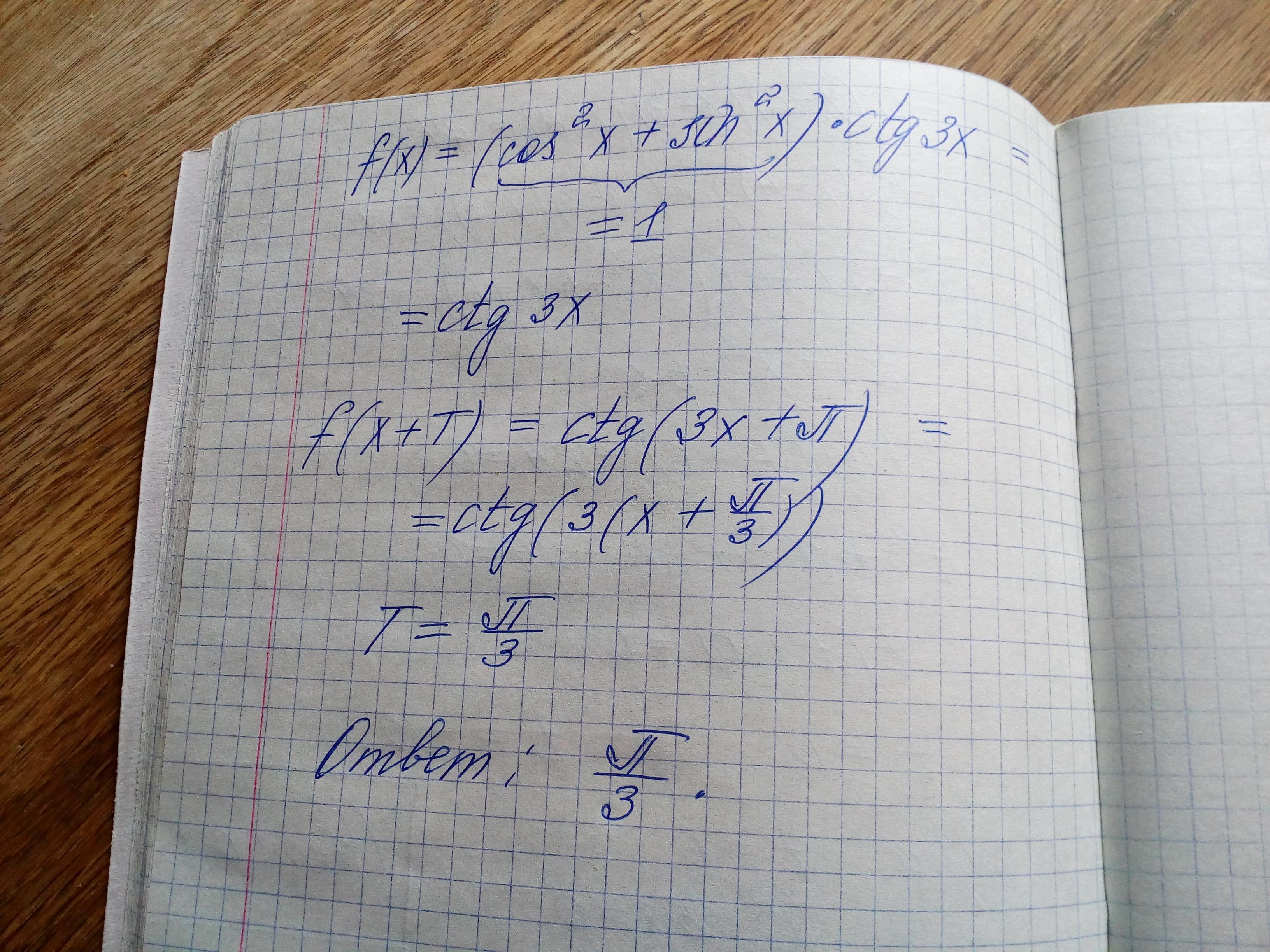Предмет: Алгебра,
автор: Error403030
Найдите наименьший положительный период функции
f(x)=(cos^2 x + sin^2 x ) *ctg3x
Ответы
Автор ответа:
1
Ответ:
Объяснение:
!!!!!!!!!!!!!!!!!!!!!
Приложения:

Похожие вопросы
Предмет: Русский язык,
автор: HappyEva
Предмет: Русский язык,
автор: tsilroman
Предмет: Английский язык,
автор: Иванов111
Предмет: Английский язык,
автор: bvsego
Предмет: Другие предметы,
автор: дашка20061904